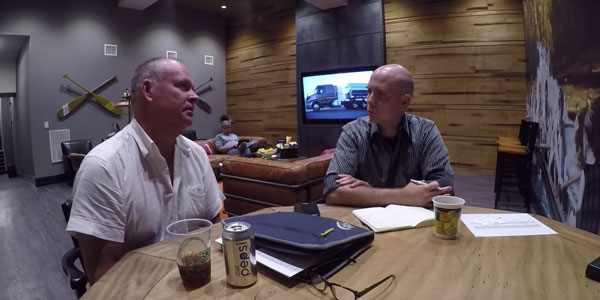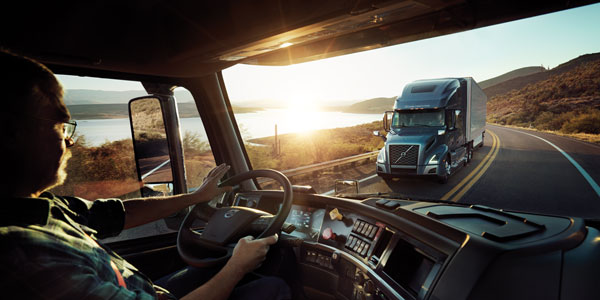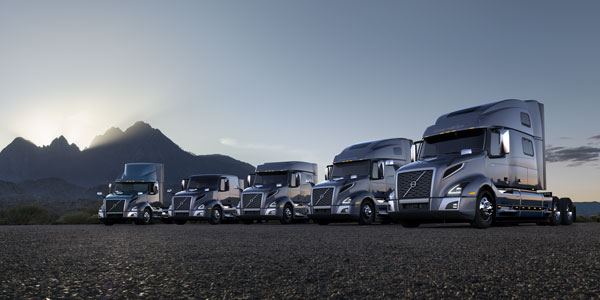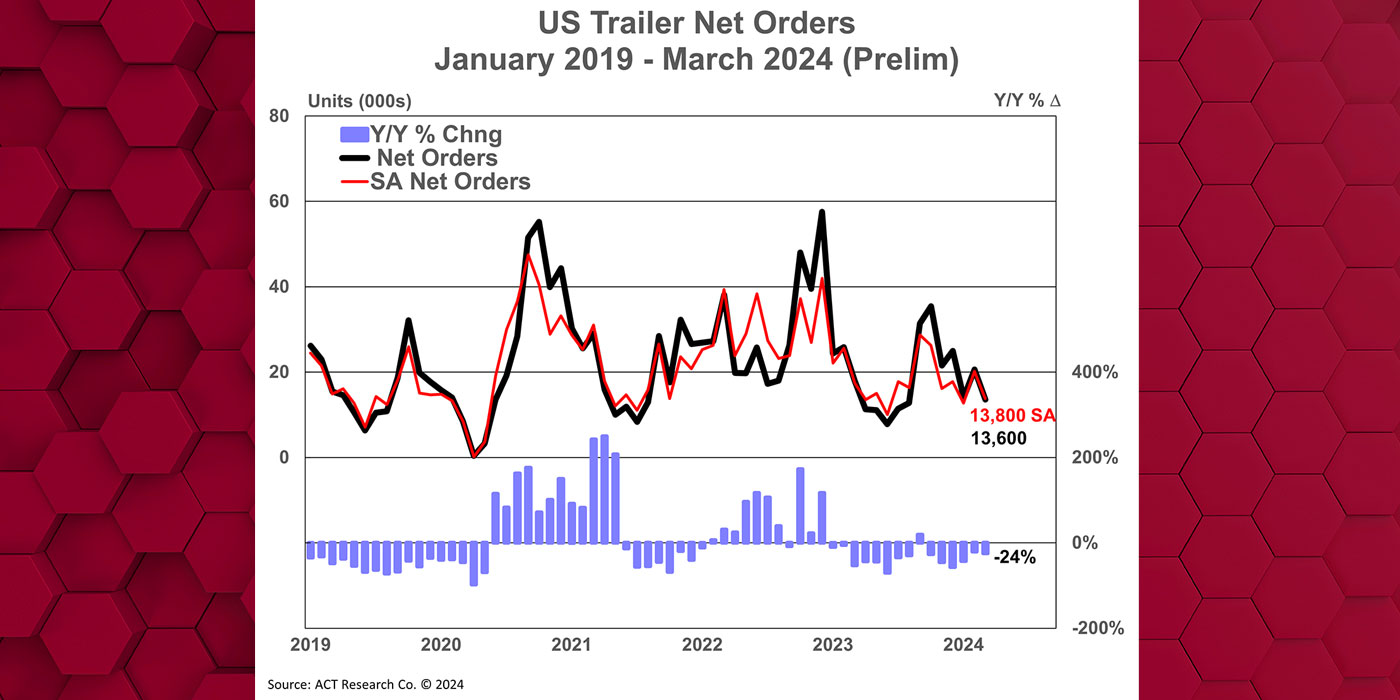Magnus Koeck stands in a sprawling ExpoCam 2017 trade show booth flanked by a pair of Volvo VNR regional-haul tractors. The sleek new trucks stand in stark comparison to the sand-blasted Brutalist construction of ExpoCam’s Place Bonaventure exhibit hall. Yet, the VNR’s aggressive aerodynamic design is given some bite with angular headlights and air intakes that echo the look of previous Volvo trucks but clearly fit the “Shape of Trucks to Come” mantra proudly displayed on the giant banners that hang from the ceiling. Magnus touts the new design along with the reimagined working environment, improved engine and transmission options, gearing and loading efficiencies, passive and active safety systems and integrated connectivity.
While there’s plenty of excitement around Volvo’s newly redesign regional haul offering, a segment that Volvo hadn’t updated in eight years at the time, it was clear that this was only the beginning. Three months later, Volvo rolls out its newly designed VNL—an updated long-haul model with four sleeper designs, including a new 70-in. sleeper. The VNL shares the VNR’s smartly designed exterior and took the interior design to the extreme with a new dashboard, an optional info-tainment system, sporting a 7-in. color touchscreen and premium audio system, and a sleeper design that serves both utility and comfort with ample storage and driver productivity features, which continue to surprise you the more time you spend in it.
Leap ahead another eight months and the final shape of Volvo’s redesign “trucks to come” arrives with the VNX heavy-haul tractor. Volvo puts the truck through its paces at its Dublin, Va., Customer Center, a building that wouldn’t be out of place doubling as Tony Stark’s swanky new digs in the next Avengers movie. As if auditioning for the role of Iron Man’s stunt double, the new lineup of VNX models puts on a choreographed display of might and maneuverability. They haul a 90,000-lb. gravel payload and cart around massive Volvo construction equipment as if they were a kid’s toys.
When the VNX was announced in March, the heavy-duty Class 8 market was heating up. Today the challenge isn’t simply selling the trucks—the multitude of improvements helps do that—it’s trying to keep up with the demand.
“There’s nothing better than having new products when the market is booming and that demand works its way down our entire supply chain,” Magnus says with a smile. As Volvo Trucks’ vice president of marketing and brand management, the strength of the OEM’s new offering and the current market climate couldn’t make him any happier.
Volvo’s new lineup seeks to meet the challenges faced by today’s fleets, and though the freight industry favors carriers right now, the problems of yesterday—namely the driver shortage and battle to maximize uptime—still haunt the industry.
“The driver shortage is still very real,” Magnus says. “I believe that it is, to some extent, preventing growth. I think the market could be even stronger, but the driver shortage is holding it back. There’s lots of replacement demand out there, and that’s what we’re seeing now. But I think it would be much stronger if it wasn’t for the driver shortage.”

There are plenty of barriers on the industry’s road to expanding the driver pool, but in Volvo’s view, the equipment shouldn’t be one of them. Driver comfort and no-brainer features that hadn’t yet been offered, like modular cup holders and storage that fit the reach of any driver, go a long way in making the driver feel more at home in the truck. Yet, the fastest-growing driver-driven features revolve around safety.
“Lately, we have given lots of customer and dealer safety presentations, as they see those features as a competitive advantage given the driver shortage,” Magnus explains. “Driving environment, living environment, resting environment and safety—those are the four areas drivers look at. In terms of safety, were the first OEM to make an active safety system, Volvo Active Driver Assist, standard equipment, and that has been received extremely well. I don’t think we’ve ever had as many requests as we’ve had since the redesign launch to present our passive and active safety features. I believe the driver shortage is a factor that’s driving that.”
Active safety features, such as the aforementioned Volvo Active Driver Assist—a radar- and camera-based system built in conjunction with Bendix and integrated into Volvo’s driver information display—get most of the ink from the industry’s press, but Magnus points out that passive safety systems are just as important, and savvy fleets are taking notice.
Passive safety features are those always-on features that you might take for granted. Things like Volvo’s redesigned headlights that, according to the OEM, are designed to reduce the eye strain for on-coming traffic and improve overall visibility, as well as Volvo’s high strength steel cab that has passed Swedish Impact Test—the world’s most stringent cab impact test—highlight Volvo’s commitment to safety.
“Passive safety features are just as important—if not more so—today than they were 10 years ago,” Magnus says. “And we continue to push to making our trucks even safer than they are today.”
Read more about the features of Volvo’s safety system here.
Today and the future
Rolling out a new lineup of trucks is no small feat. As cab and drivetrain development cycles have diverged, the truck as a technology platform needs to be upgradable for the demands of tomorrow. At the forefront of Volvo’s new design is continuous improvement through integration and the introduction of new features.
“The telematics and connectivity hardware that we have baked into our trucks enables us to offer partnered services running through our hardware, so that fleets don’t need add-on systems if they want to run additional third-party solutions,” Magnus explains. “It’s all there already. We have an opportunity for future connectivity providers to use our system. It’s like the iPhone and app—third-party providers can create the app; we’re providing the platform.”
Magnus clarifies that both third-party solutions and Volvo’s own proprietary technology solutions will be the keys to making its new lineup of trucks even more productive several years from now. He points to Volvo’s continued development of engine Remote Programming, which can update engines over the air via cellular networks and eliminate the need for fleets to roll their trucks into a service bays for software updates. This means that fleets will realize increased operational efficiency much sooner than they have in the past. Currently, Remote Programming—which takes approximately 20 minutes or less to complete—has given fleets back hundreds of days in uptime, due to the fact that trucks aren’t sitting in service bays for updates, and increased performance of 1,300 Volvo trucks.
In realizing its “Shape of Trucks to Come,” Volvo has no intention of looking back. The recent announcement that it has transitioned from production of the legacy VNL 670 model to full production of the new VNL 760—a decision that was driven by both Volvo leadership and customer demand—is proof of that.
“We could have continued building legacy trucks, but our focus is to get the new trucks on the road. When we launched, we expected that the demand would move toward the new trucks, which it has, exponentially,” Magnus concludes. “The market is strong, our order pace is good and the reception of our trucks has exceeded expectations.”















